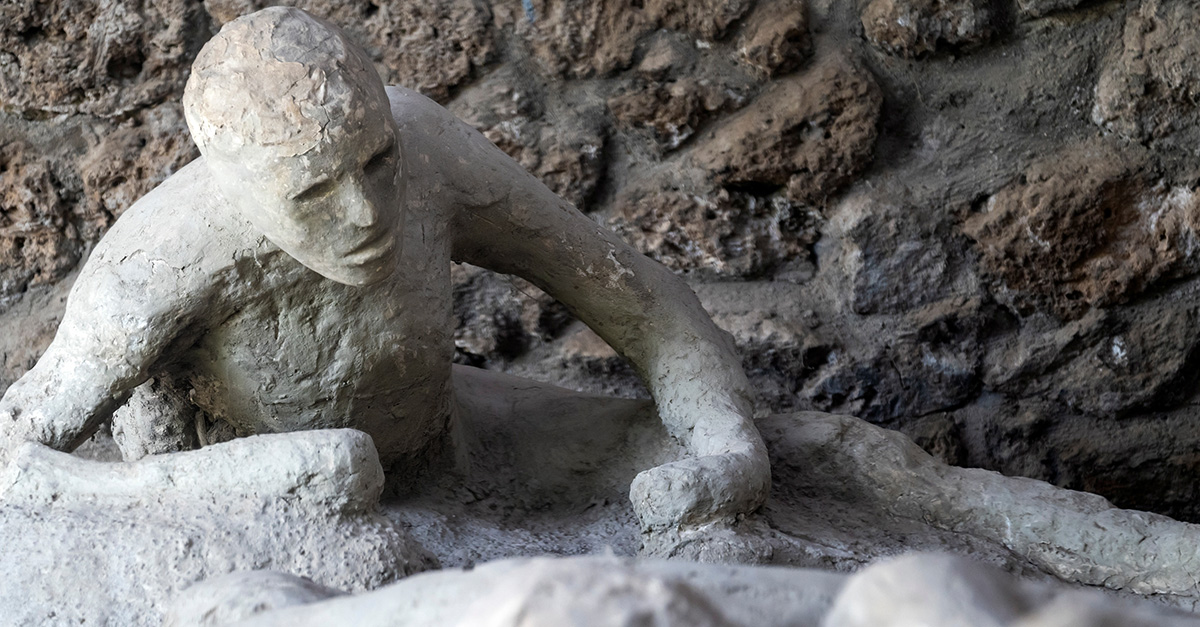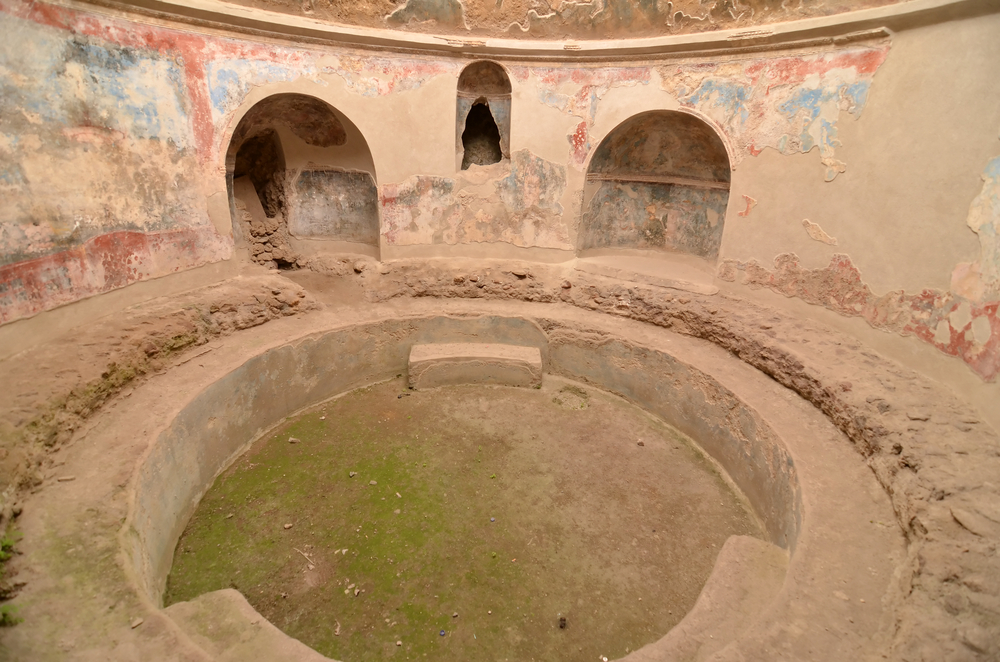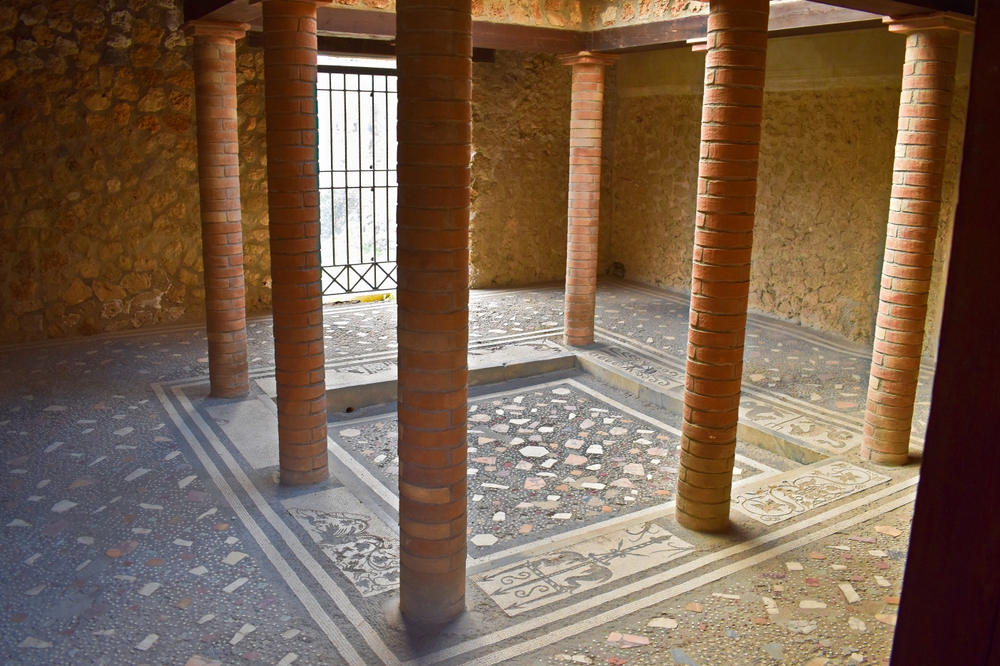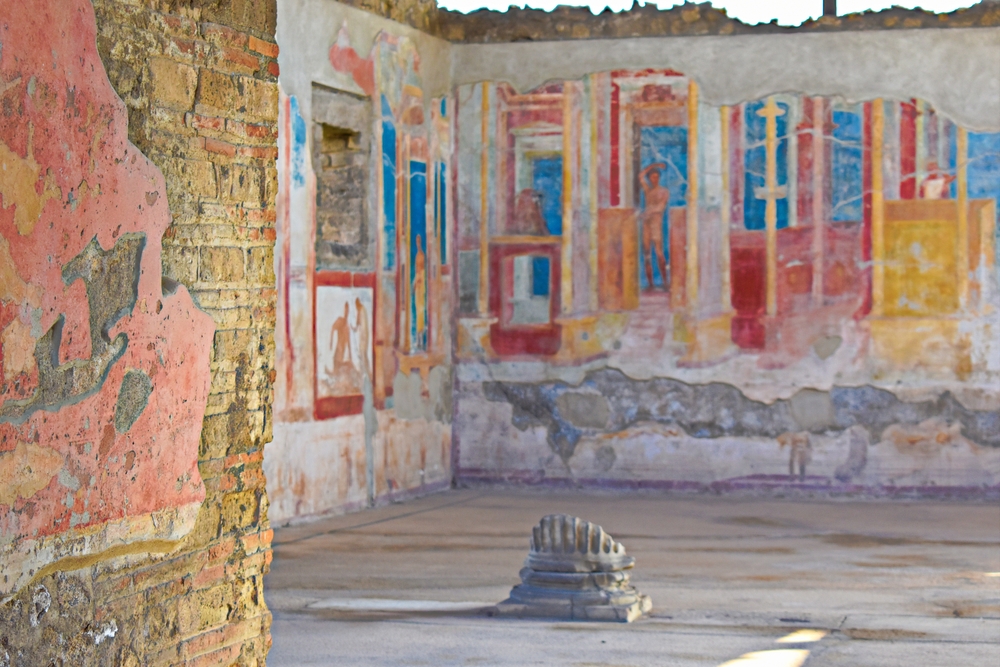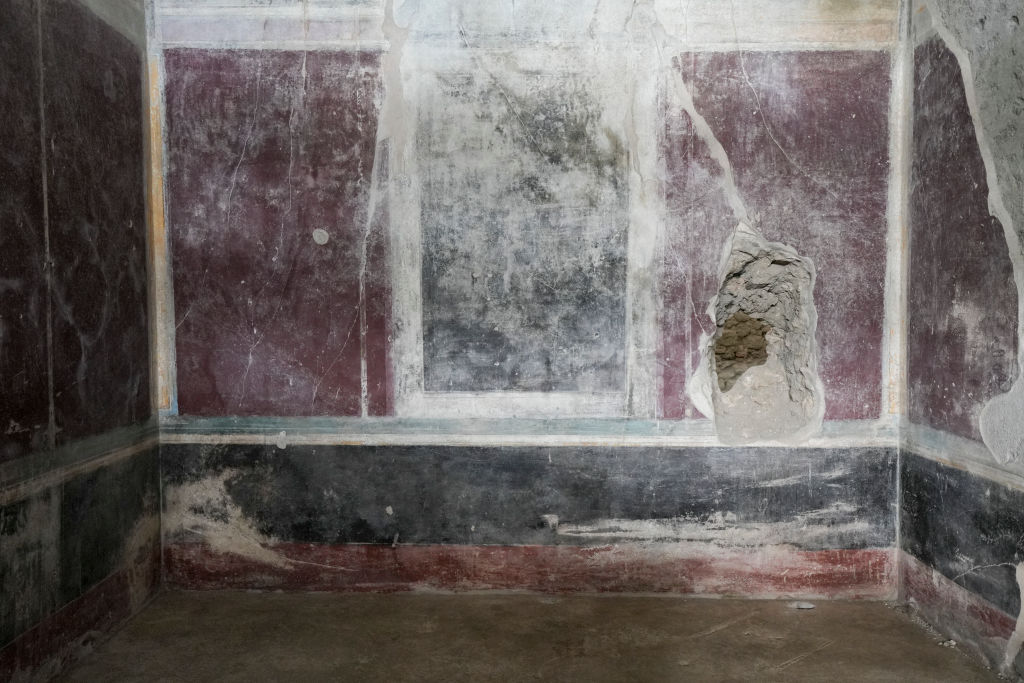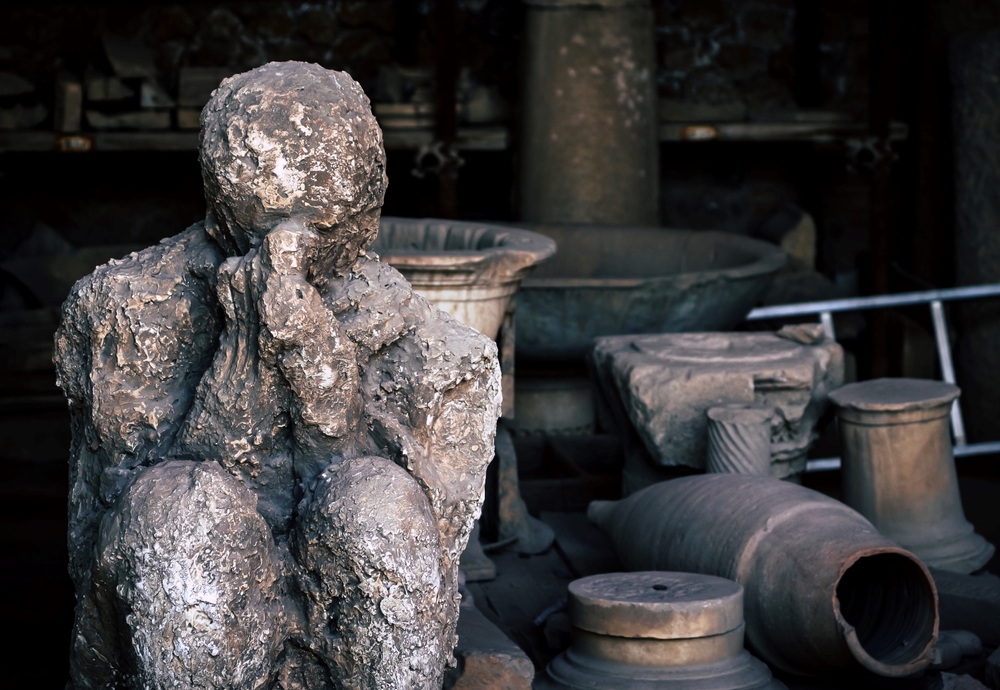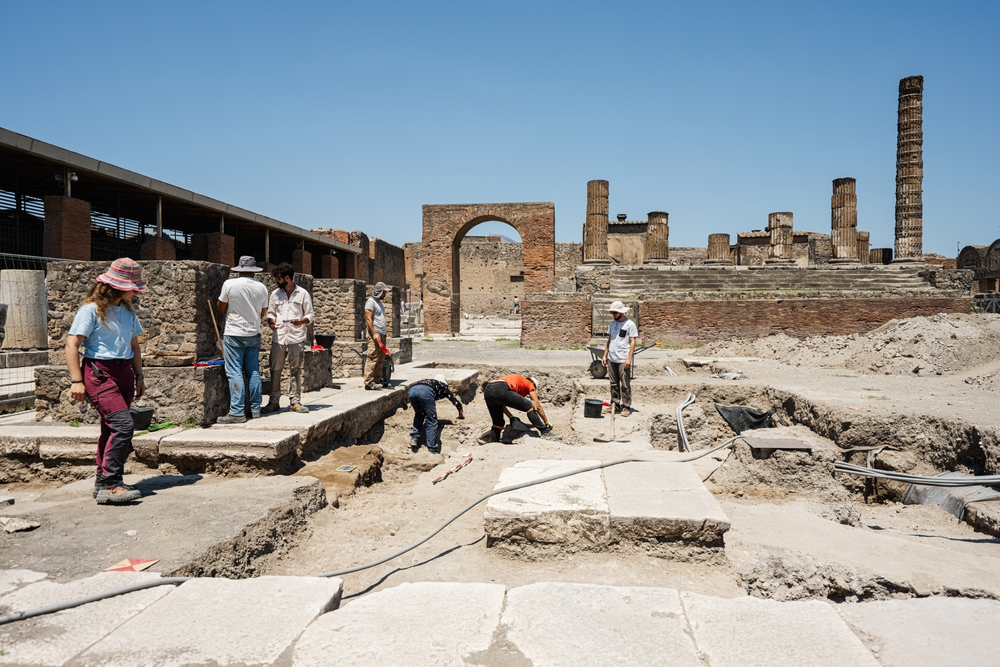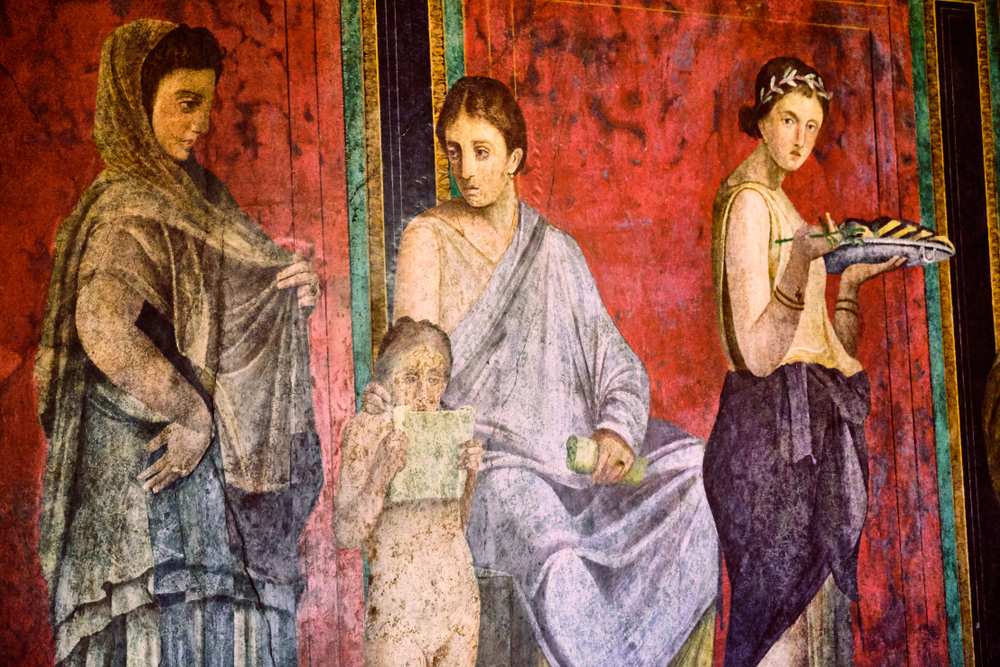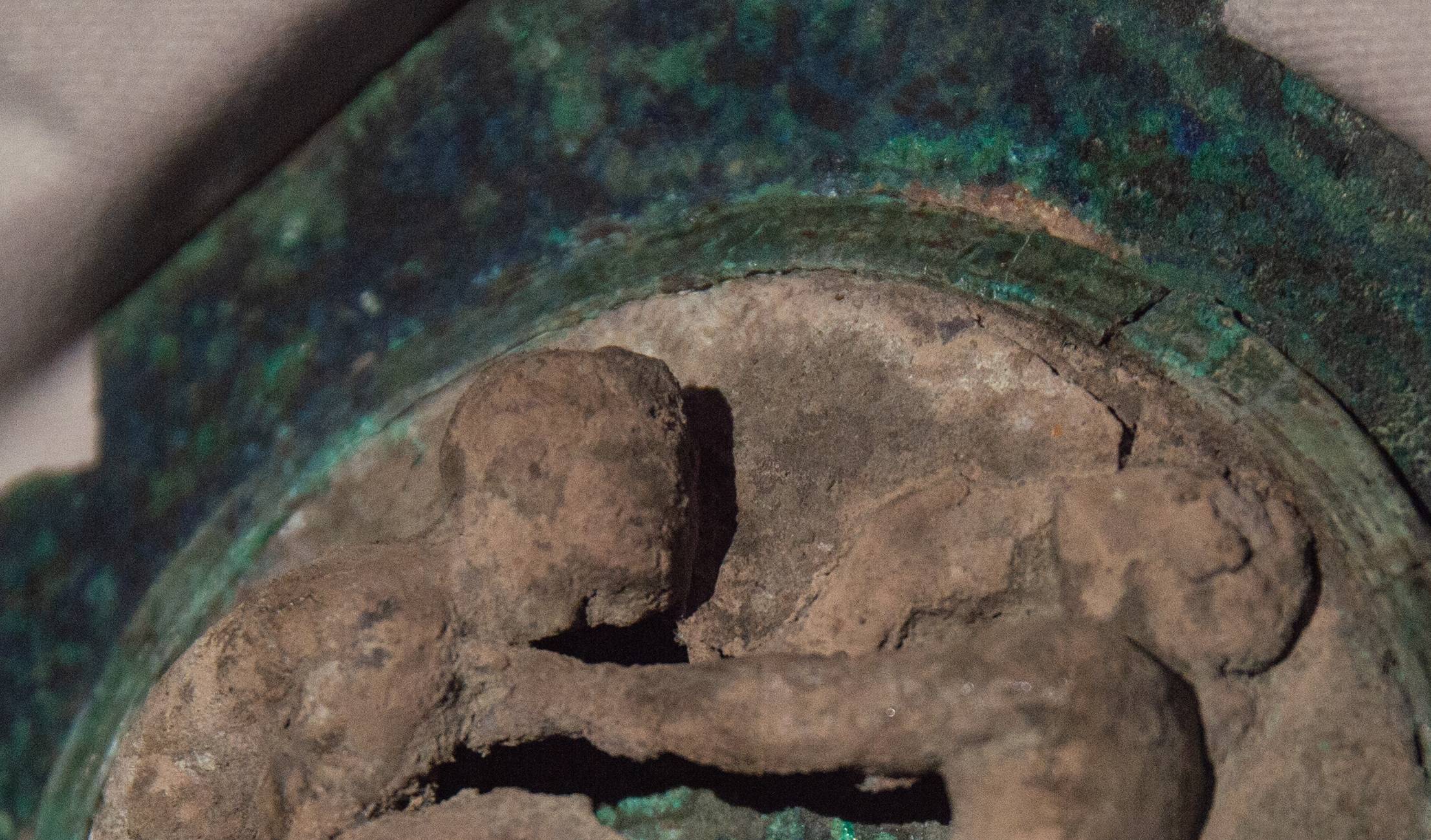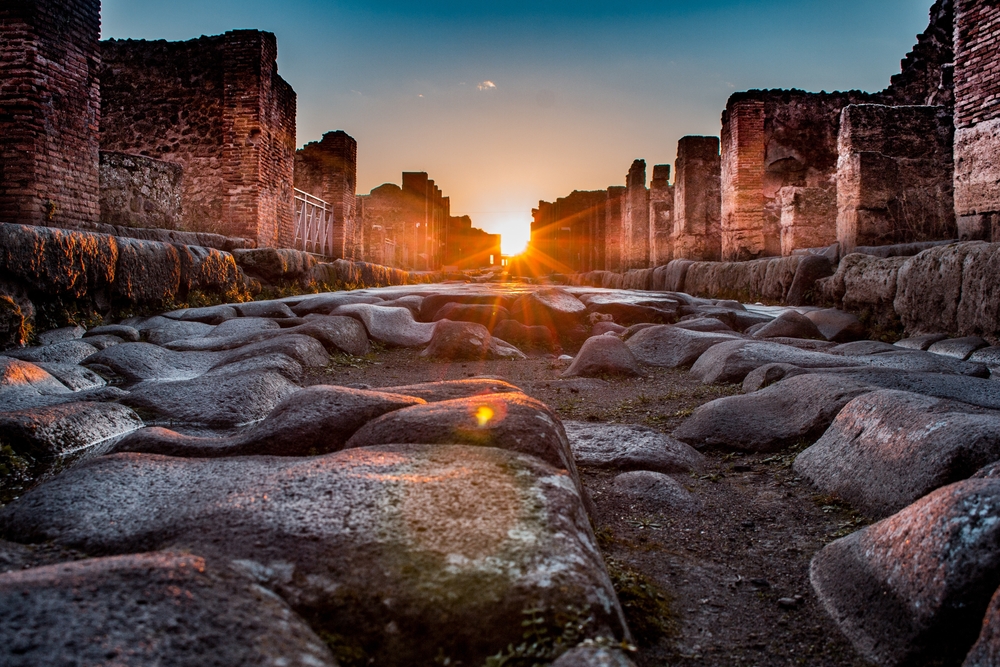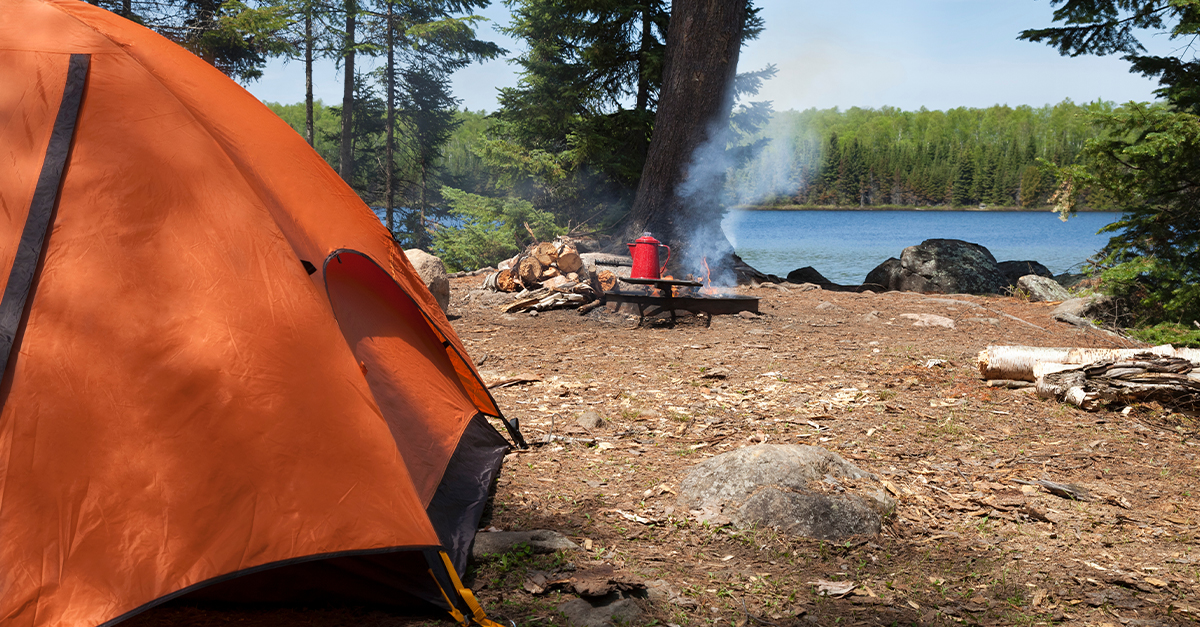Researchers Discover Luxury Complex Amid Ruins Of Pompeii
When Pompeii was destroyed by a volcanic eruption on August 24, 79 CE, the city's footprint was astonishingly well preserved under the ash. Historians were able to get a glimpse into Roman life from this city frozen in time, from the remains of harnessed horses found in 2018 to the most recent discovery: a 2,000-year-old thermopolium, or bath house. Let's explore this newest discovery and what it could mean for our understanding of the ruins of Pompeii.
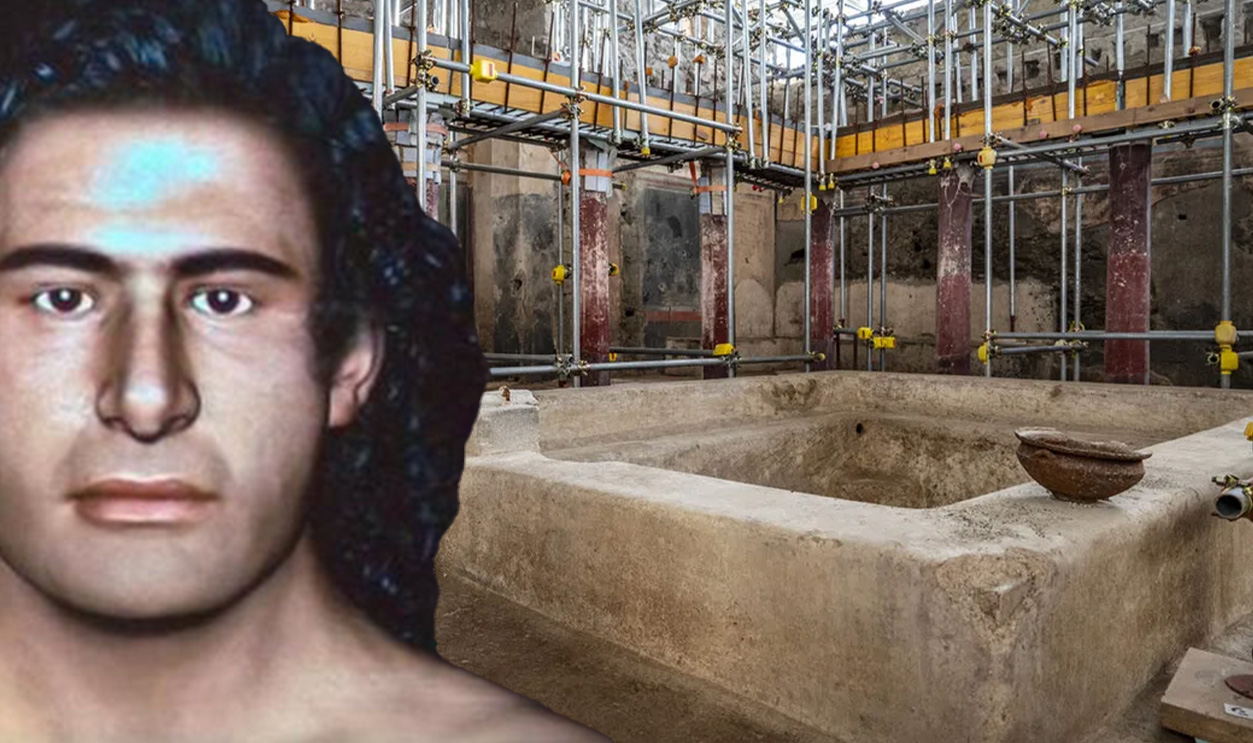
What Did Archaeologists Find?
Archaeologists located a private bathhouse built almost 2,000 years ago. The bathhouse was built with a series of hot, warm, and cold rooms for a spa-like setting in what archaeologists believe is the largest find of its kind.
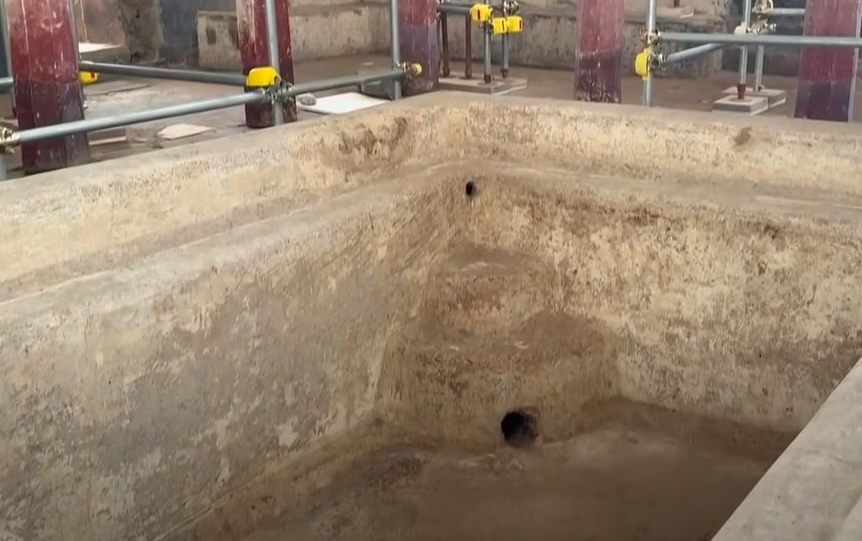 Archeologists discover private bathhouse in Pompeii ruins, NEWS CENTER Maine
Archeologists discover private bathhouse in Pompeii ruins, NEWS CENTER Maine
Where Was It Found?
This newest discovery, revealed in mid-January 2025, was found in Regio IX (Region 9) of Pompeii. Archaeologists divided Pompeii into nine regions, devised by archaeologist Giuseppe Fiorelli in 1860. The large Thermopolis was located in a large dwelling in the center of Pompeii.
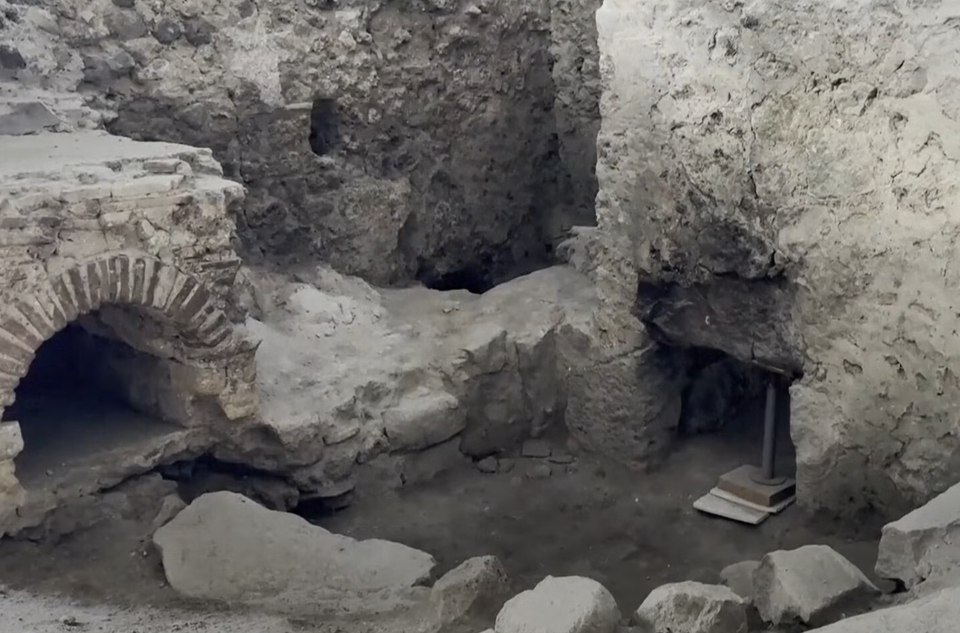 Archeologists discover private bathhouse in Pompeii ruins, NEWS CENTER Maine
Archeologists discover private bathhouse in Pompeii ruins, NEWS CENTER Maine
Didn't The Romans Already Have Communal Baths?
While it's certainly true that the Romans already had communal bathing facilities, as is evidenced all over Italy and in places like Bath in England, many wealthier Romans would also have had these large spa-like facilities built in their private homes.
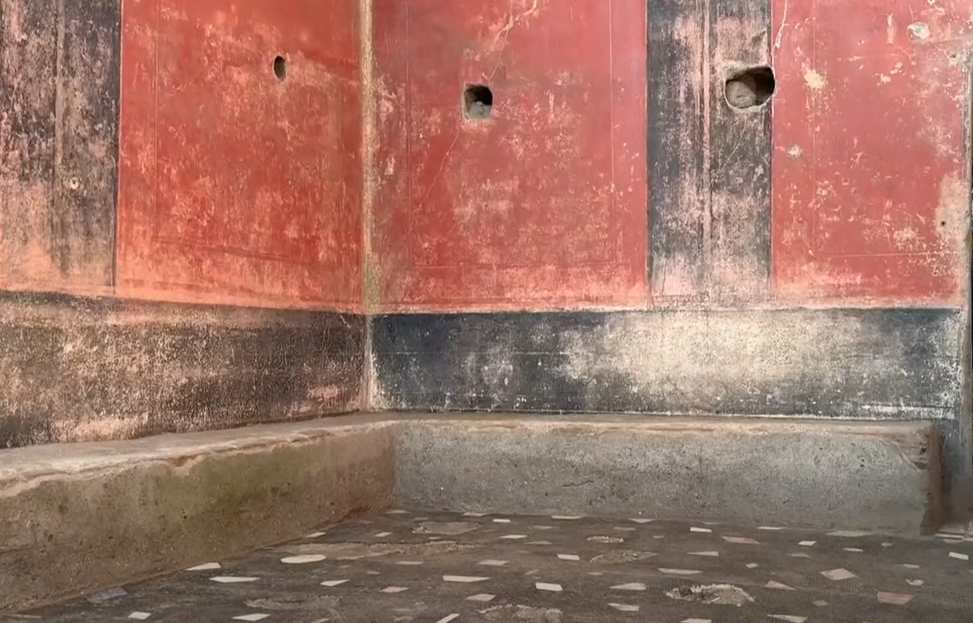 Archeologists discover private bathhouse in Pompeii ruins, NEWS CENTER Maine
Archeologists discover private bathhouse in Pompeii ruins, NEWS CENTER Maine
Why Did They Build Them?
The working theory is that Romans who were wealthy enough to build these types of facilities in their own homes used them as a place to close deals, promote an election campaign, or entertain guests of a higher social status. The guests and the owners of the home would bathe and then have a banquet.
The Largest Thermal Complex In A Private House
Archaeologists believe that this discovery is the largest thermal complex in a private house, able to accommodate up to 30 people, judging by the stone benches that were found inside the changing rooms.
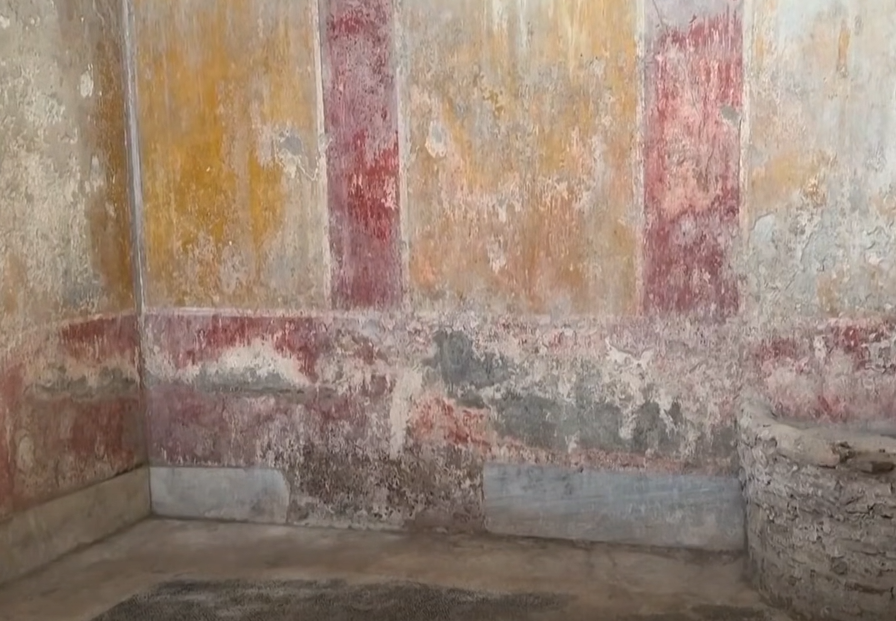 Archeologists discover private bathhouse in Pompeii ruins, NEWS CENTER Maine
Archeologists discover private bathhouse in Pompeii ruins, NEWS CENTER Maine
The Romans' Own Thermotherapy Practice?
According to historians, after shedding their robes, revelers would then relax in a caldarium, a room with a hot bath inside, before moving to a tepidarium—or warm room—before finishing off in a frigidarium or cold room.
Thermotherapy's Roots In Ancient Egypt
The first recorded use of heat therapy, otherwise known as "thermotherapy", was carried out by Imhotep, an Egyptian aruspice (a person trained to practice a form of divination in Ancient Egypt) between 2655 and 2600 BCE.
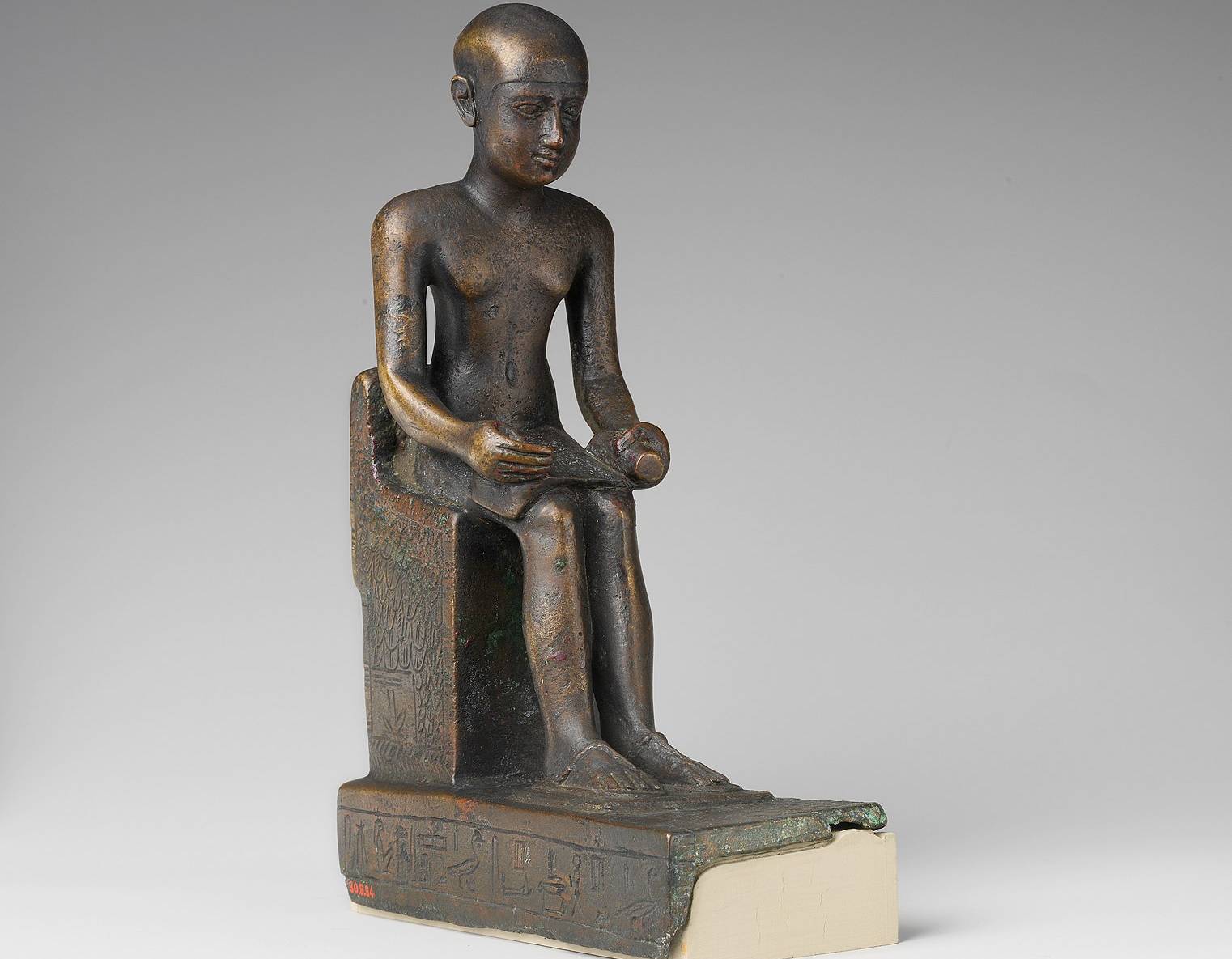 Metropolitan Museum of Art, Wikimedia Commons
Metropolitan Museum of Art, Wikimedia Commons
Likely Owned By An Important Community Figure
Due to the overall size of the home, it is likely, according to researchers, that the home belonged to a prominent community figure—and, given the nature of how these thermal complexes were used, to curry favor with politicians or to close business deals, it's likely that the owner was already extremely wealthy.
 Janus Media, Pompei, ieri, oggi, domani (2007)
Janus Media, Pompei, ieri, oggi, domani (2007)
Other Discoveries In The Home
Archaeologists began excavating the home two years ago and have since discovered the bodies of a woman, between approximately 35 and 50 years old and a man, approximately in his early twenties. While nobody can confirm that these were the owners of the home, they tried to seek shelter inside the large complex, but were ultimately unsuccessful.
A Banquet Room Discovered
Last summer, archaeologist Sophie Hay discovered a large banquet room (that would have been connected to the thermal complex) to allow for guests to begin dining immediately after their thermal experience. On the walls of the banquet room, stunning frescoes were unearthed.
What Are Frescoes?
Frescoes are paintings done on wet plaster, a technique used to ensure longevity, as the wet plaster will seal the paint when it dries. A popular method of painting during the Roman era, the fresco technique were famously used by Giatto, Michaelangelo, and Massacio, some of the world's greatest painters.
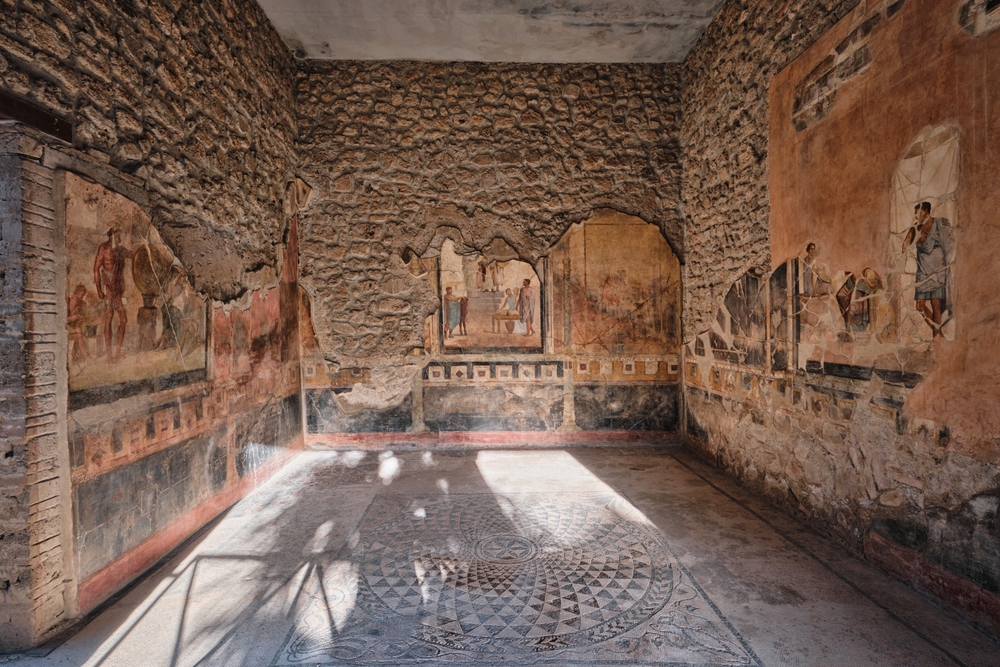 BERK OZDEMIR Similar, Shutterstock
BERK OZDEMIR Similar, Shutterstock
The Victims Of Pompeii
During the excavations that have taken place in the modern era, more than 1,000 victims have been located, although there are many more thought to be buried.
Other Important Discoveries In Pompeii
From 1960 to 2018, archaeological digs at Pompeii were banned or significantly restricted to allow for targeted digging to take place, as well as restoration and conservation efforts. However, since 2018 (when digs were re-authorized by the Italian government), several other important discoveries have been made.
A Pair Of Harnessed Horses
Whether they were somebody's method of escape that they never made it to, or simply tied up and left, two horses wearing their harnesses were discovered in the Villa of Mysteries, a large house often thought to belong to a Roman general.
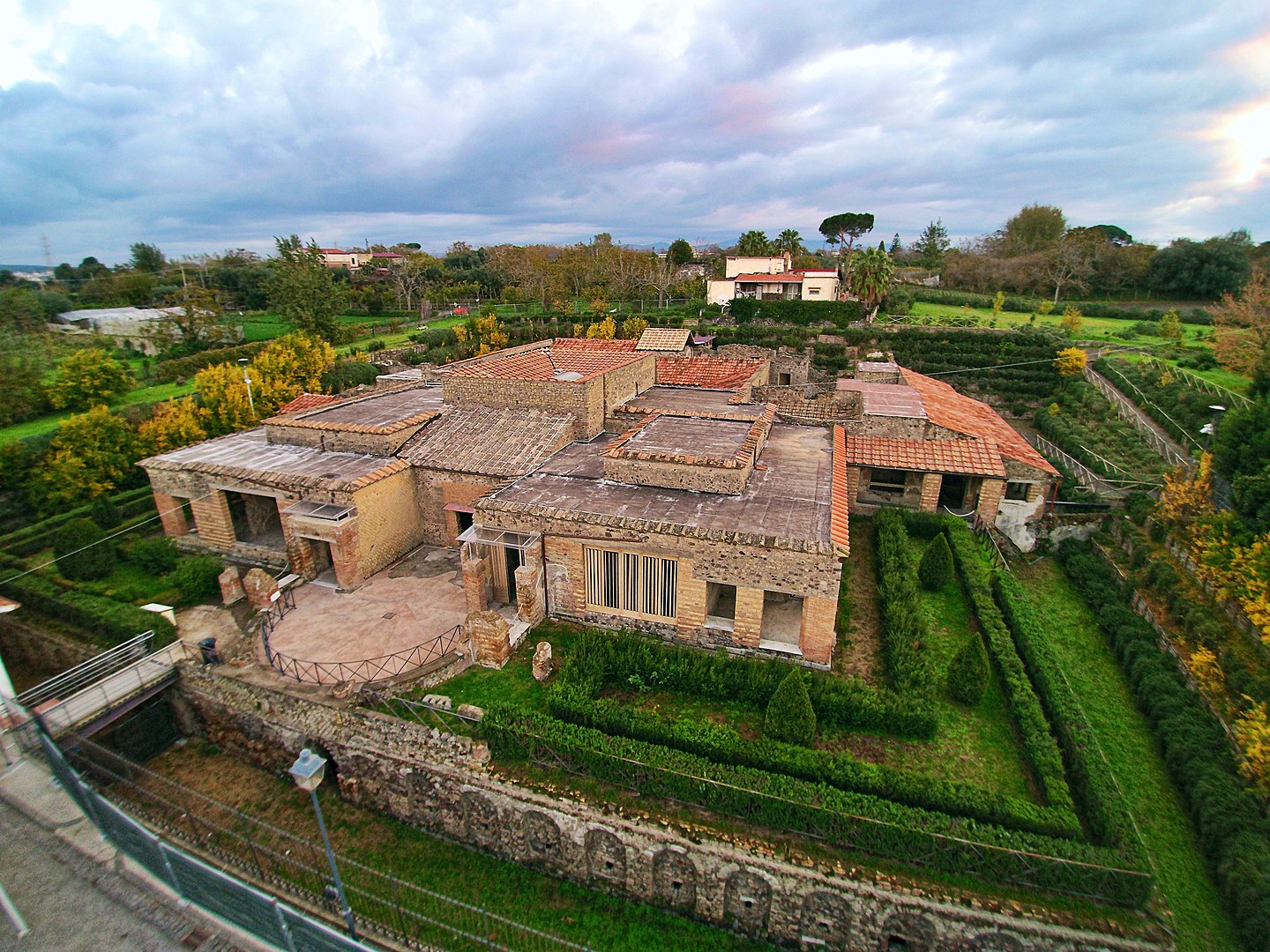 ElfQrin, CC BY-SA 4.0, Wikimedia Commons
ElfQrin, CC BY-SA 4.0, Wikimedia Commons
Wine Presses, Ovens & Frescoes
More indicators of the luxury of this person was the presence of wine presses, ovens, and elaborate frescoes found within the Villa of Mystery. Another indicator of extreme wealth was the fact that Villa of Mysteries was built with a view of sea.
A Four-Wheel Ceremonial Chariot
In January 2021, a large four-wheel, ceremonial chariot was uncovered north of Pompeii, in Civita Guilana, which was also the site of a horse stable discovery in 2018.
The Future Of Pompeii
As new buried treasure in Pompeii is unearthed all the time, we get a unique window into the lives of the people who lived in Pompeii and were frozen in time by the eruption of Mount Vesuvius. To date, these ruins are still the most pristinely preserved record of Roman life in that part of the Empire at that time.
You May Also Like:
One Of The Earliest Known Alphabets Discovered In Syria
Archaeologists Discover Entrance To A 2,100 Year Old Temple
The Strange History Of The Bermuda Triangle
Sources:
Archaeologists In Pompeii Discover Private Spa
New Pompeii Excavation Reveals A Large Private Spa That's 2,000 Years Old

